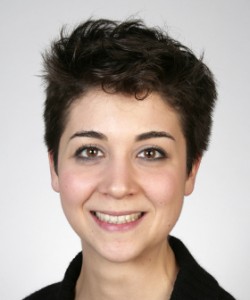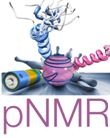 I come from Italy, where I attended a Bachelor Degree Course in Chemistry and Material Chemistry at the University of Bologna. For my Bachelor’s Thesis I joined the theoretical group of Prof. Francesco Zerbetto, focusing on “Ultrafast Electron dynamics in Aromatic Hydrocarbons through DFT Calculations”. I then started a two-year Master Program on Photochemistry still based at the University of Bologna, throughout which I had the opportunity to travel and broaden my experience. First, I spent a year in Lund, Sweden, where, after an initial 6-months Erasmus program, I carried out my first Master Thesis by joining Prof. Daniel Topgaard’s NMR group of the Physical Chemistry Department, focusing on “Molecular Structure and Dynamics of non-ionic surfactants through 13C solid-state NMR and MD simulations”. I then went back to Bologna, finished my exams, and left again for my second Master Thesis, this time at the Centre de RMN à Très Hauts Champs (CRMN) of the Ecole Normale Supérieure of Lyon, France. Together with Prof. Lyndon Emsley’s group I focused on “Methods for Studying Molecular Structure and Dynamics in Powdered Solids by 1H NMR Spectroscopy”. After my thesis defence at the University of Bologna, I was finally awarded a Master’s Degree. On January 2014 I started a PhD program with Prof. Clare P. Grey’s group at the University of Cambridge, as part of the pNMR project.
I come from Italy, where I attended a Bachelor Degree Course in Chemistry and Material Chemistry at the University of Bologna. For my Bachelor’s Thesis I joined the theoretical group of Prof. Francesco Zerbetto, focusing on “Ultrafast Electron dynamics in Aromatic Hydrocarbons through DFT Calculations”. I then started a two-year Master Program on Photochemistry still based at the University of Bologna, throughout which I had the opportunity to travel and broaden my experience. First, I spent a year in Lund, Sweden, where, after an initial 6-months Erasmus program, I carried out my first Master Thesis by joining Prof. Daniel Topgaard’s NMR group of the Physical Chemistry Department, focusing on “Molecular Structure and Dynamics of non-ionic surfactants through 13C solid-state NMR and MD simulations”. I then went back to Bologna, finished my exams, and left again for my second Master Thesis, this time at the Centre de RMN à Très Hauts Champs (CRMN) of the Ecole Normale Supérieure of Lyon, France. Together with Prof. Lyndon Emsley’s group I focused on “Methods for Studying Molecular Structure and Dynamics in Powdered Solids by 1H NMR Spectroscopy”. After my thesis defence at the University of Bologna, I was finally awarded a Master’s Degree. On January 2014 I started a PhD program with Prof. Clare P. Grey’s group at the University of Cambridge, as part of the pNMR project.
| Home Country | Italy |
| Project Topic | New NMR methods for paramagnetic materials for batteries |
| Project Description | The project would firstly focus on the analysis of spin-orbit coupling on 6/7Li NMR chemical shift in paramagnetic cathodes, using LiFePO4 and LiCoPO4 as model compounds. The computational approach would follow the already presented bond-pathway decomposition of 31P and 6/7Li NMR shifts in LiMPO4 (M=Fe2+, Co2+) phases. To this regards, the obtained 31P chemical shifts are found to be in good agreement with experimental data, validating the assumption whereby the 31P chemical shifts comes from hyperfine interaction with the transition metal (TM) center. Differences between calculated and experimental 6/7Li chemical shifts are thought to be due to the relatively large contribution of the spin-orbit effects to the overall Li shift. Basing on this previous study, the computational approach of the project would consist of calculating 6/7Li NMR parameters using different approaches (GFT basis sets and all-electron effective core potentials; PW basis sets and pseudopotentials), different functionals (hybrid B3LYP, hybrid PBE0, full DFT PBE with the Hubbard +U correction) and different packages (CRYSTAL09, CASTEP, CP2K, Quantum-Espresso). The obtained results would lead to a better insight on how hyperfine and spin-orbit effects are treated quantum-mechanically, and on how influent the presence of transition metals with anisotropic magnetic susceptibility is on the chemical shift of the observed site. On parallel, 6/7Li NMR experiments on the same materials would be optimized and carried out in order to obtain experimental data to compare with the computational results. |
| Project Home | University of Cambridge (UCAM) |
| Supervisor | Clare Grey |
| Starting Date | January 2014 |
| Publications | |
| Meetings | pNMR Training School, February 2014, Mariapfarr, Austria Title: Electronic and Nuclear Relaxation, and Electronic Structure Calculation Role: participant pNMR Workshop, September 2014, Cambridge, UK Multidisciplinary Workshop #2 Title: “New Developments in Experimental and Theoretical Techniques for the Study of Paramagnetic Inorganic Materials”/span> Role: participant pNMR Mid-Term Review Meeting, September 2014, Cambridge, UK Role: participant Complementary Skills Course, given by the RSC, September 2014, Cambridge, UK Title: How to write, edit a scientific paper and get it published Role: participant pNMR Applied Training, June 2015, Berlin, Germany Title: Introduction to practical pNMR shift calculations Role: participant pNMR Complementary Skills Training, July 2015, Prague, CZ Title: Personal Skills, conference presentation and Communication Role: participant pNMR Workshop 3, Prague, CZ Title: pNMR : from rags to riches, Challenges and potentials of NMR on paramagnetic molecules, Role: speaker |
| Secondments | 15/06/2014-15/09/2014, Technische Universität Berlin; 01/09/2015-01/12/2015 BBIO, Germany; 01/06/2016-01/09/2016 Technische Universität Berlin. |
